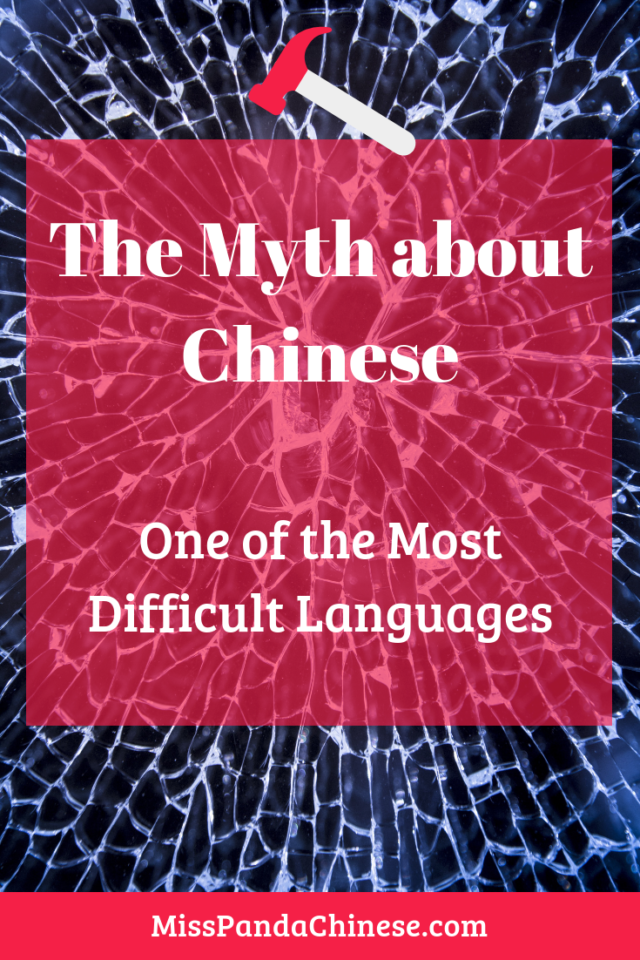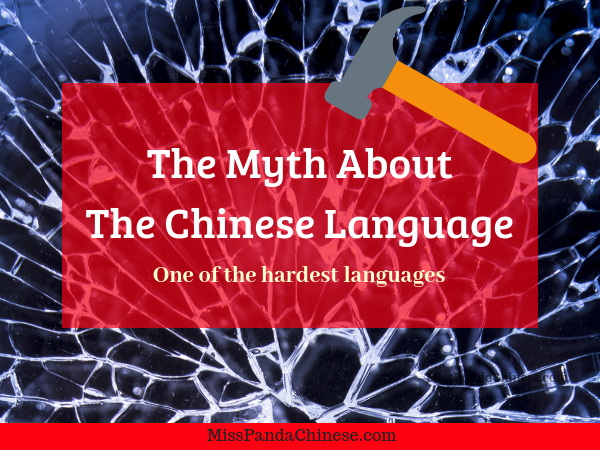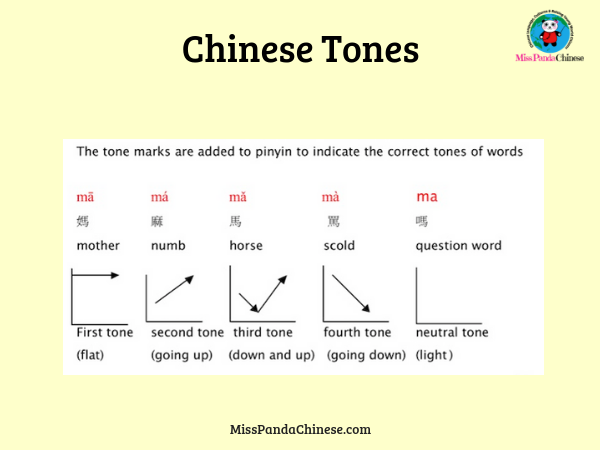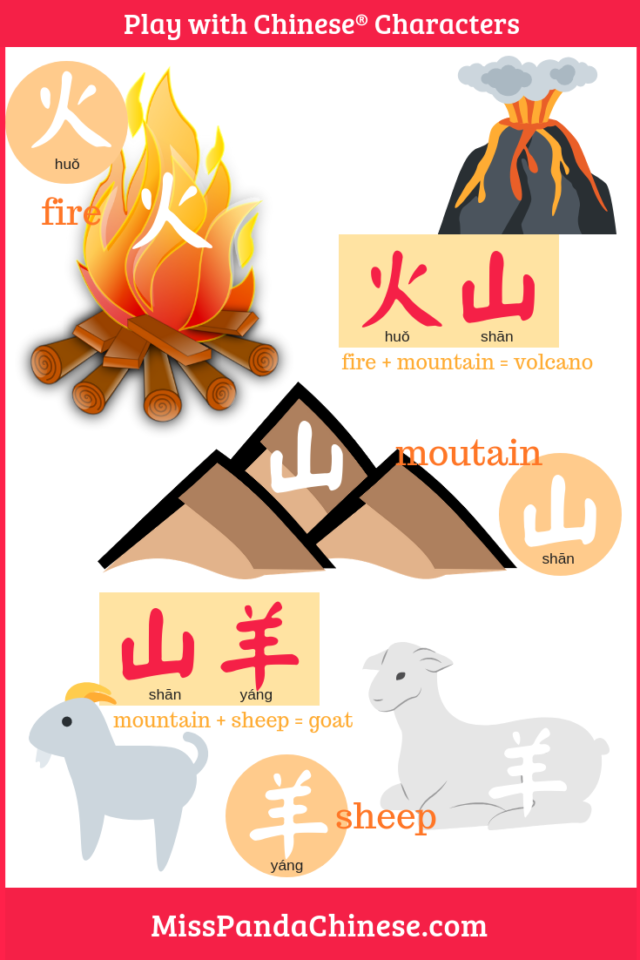The Myth About the Chinese Language

Chinese here refers to Mandarin Chinese, the official language of China and Taiwan, and one of the official languages of Singapore, and Macau.
You may have heard that “Chinese Is One of the Most Difficult Languages in the World.”
This may be what comes to your mind when you hear the “Chinese language.”
But, I need to tell you that this is a myth.
It’s a misunderstanding of the Chinese language, a language that is very developed and beautiful.
The statement “Chinese Is One of the Most Difficult Languages in the World” has no research support.
Even the prestigious Foreign Service Institute of the U.S. States Department lists Chinese – Mandarin as one of the “Super-hard languages – languages which are exceptionally difficult for native English speakers.” according to the institution’s experience of language learning.
Here is the truth. Chinese is NOT one of the most difficult languages in the world. It is DIFFERENT.
Chinese is different from English. Actually, it is quite different from English, Spanish, French…all the Romance languages.
If you ask a native Chinese speaker about English, he or she may tell you that English is very difficult. Why? Since s/he has never dealt with verb tenses in the Chinese language.
NO Tenses in Chinese
Yes! There are no verb tenses in the Chinese language. In general, you just add the time phrase (past, present, future) at the beginning of a sentence or before a verb.
Have you heard about this before? Do you think that will save you some time on your learning journey?
ZERO Verb Conjugation in Chinese
How does that work?
It is simple.
No matter who does something, the verb stays the same. An adult student whose native language is Spanish said, “I am very surprised about this. It makes it so simple to have a conversation at a beginner level.”
SIMPLE Conversation in Chinese
You can initiate a simple everyday conversation in Chinese with a native Chinese speaker, even if you’ve only begun learning Chinese for a few hours.
View this post on Instagram
Why?
There are no tenses.
There is no verb conjugation. You can use just a few words to express what you need, what you want, and your preferences.
A story I always like to share is about a teen student of mine – After studying Chinese for 10 hours, he surprised himself when he realized he was able to have a 100% Chinese conversation for 20 minutes without any English.
It was an everyday conversation. Even though it was not something complicated or profound, this experience has motivated him so much.
Language is communication. It is not memorization of dialogues.
We use language to socialize – It is interactive. Having a conversation is a celebration of connecting through a new language.
TONES in Chinese
How about the tones? Yes, the tones. Chinese is a tonal language. There are four tones plus a neutral tone.
Is tone important? Yes!
What?
Don’t worry! Can you sing Twinkle Twinkle Little Star?
If you can then you are in good hands. And I know you can.
Tones are just something new! To learn, you just need to hear them again and again. What you need is to relax and have fun.
Mandarin Chinese is not the only tonal language. Many of the other Chinese languages spoken in different regions in China are tonal as well.
For example, Cantonese, which is spoken in Canton province and its neighboring area, as well as in Hong Kong (Hong Kong Cantonese) has 9 tones. Hokkien, which is used in Fujian province and neighboring areas, has 7 tones.
Chinese Characters or Chinese Words
The smallest Chinese writing unit is called a “character” (zì / 字). Every Chinese character has a meaning, and very often there can be more than one meaning. Characters are the foundation of learning Chinese reading.
Every Chinese character is like a lego piece. The more lego pieces you have, the bigger the castle you can build.
Put a couple of characters together, and you can form a “phrase” (cí / 詞|词).
See the image above. Add Chinese characters, “fire” and “mountain” together, and you get volcano!
How about adding the Chinese characters, “mountain” and “sheep” together? You have a goat!
Do you see the picture above? These three characters can form two phrases.
Chinese phrases are powerful because they can deliver a big word in English, and they have a bigger meaning in Chinese!
After that, you can add more elements, like pronouns and verbs to the game.
Then, you have a sentence or two or more!
This is the part that needs some time to build up, just like learning any language or any subject. We all need to make effort to learn something new. With consistency, comprehensible input, and practice, all learners can make progress steadily and quickly.
A Chinese language learner needs to have plenty of input (target language input – listening and reading) before they can produce output (target language output – speaking, and writing).
View this post on Instagram
The Structure of Chinese Characters
On another note, if you understand how a Chinese character is put together, you will find the written form of the Chinese language a lot of fun.
There are three important elements to Chinese characters: image, meaning, and sound.
Is this information new to you? If so, you will find the following interesting.
The construction of Chinese characters has 6 categories. This introduction video below can give you a big picture.
The first Chinese character formation category is the drawing of things or animals. These characters are in the “pictogram group.” Chinese characters in the pictogram group are like pictures, and they are the most well-known group of Chinese characters for non-native speakers and learners in the early learning stage.
Young Chinese children find these characters easy to remember.
Many of the picture words are used like roots in Romance languages. These are called Chinese “radicals” (bù shǒu / 部首).
A Chinese radical is a component of a Chinese character.
In a traditional Chinese dictionary, all Chinese characters are listed under different radicals as an index, which provides a way to look up Chinese words/characters.
Radicals are like smaller lego pieces, or foundation building blocks for Chinese characters.
View this post on Instagram
Among the remaining five Chinese character formation categories, the “phonetic-semantic compound group” is the most important one.
Chinese characters in this group make up about 80% of all Chinese characters. A phonetic-semantic compound character has one part that indicates its pronunciation and the other part that indicates its meaning.
Now, you have more understanding of the Chinese language.
After having this “Chinese Language Orientation.” Do you think that even though the Chinese language is different it is also interesting?
The Two Chinese Writing Systems
Taiwan, Hong Kong, and many overseas Chinese communities use traditional Chinese.
China and Singapore use simplified Chinese.
Traditional Chinese characters are the foundation of Chinese writing.
Simplified Chinese characters are formed based on traditional Chinese characters; some are transformed from Chinese cursive calligraphy styles.
The simplification process of Chinese characters started in Mainland China in the 1950s. Simplified Characters have fewer strokes.
Do you know which Chinese writing system is the best one to learn?
So, there you have it. There is no more myth about the Chinese language.
The Chinese language is unique
Speaking the Chinese language is fun. The writing system is different from the Romance languages, but there is a system. You will need to take time to learn, polish, and get better.
Parents and young learners
Are you a parent who does not speak Chinese? Are you a parent who is a heritage speaker of Mandarin with limited proficiency? Have you been thinking about introducing Chinese to your child? What is holding you back to introduce Chinese to your child?
It all starts from listening (language input) – When your child was born, you started talking to her and reading to her. She is listening and she is absorbing.
The “Let’s Learn Mandarin Chinese with Miss Panda!” audio program introduces everyday Chinese to young children with an interactive storytelling design in two languages, English and Mandarin. It is created for parents and children with limited or no Mandarin Chinese background. There are songs, chants, and interactive playing. The format of this program is in Chinese and English so learners can understand the content from the start and enjoy it. It is streaming Amazon Music, Apple Music , and Spotify. I hope you check it out!


